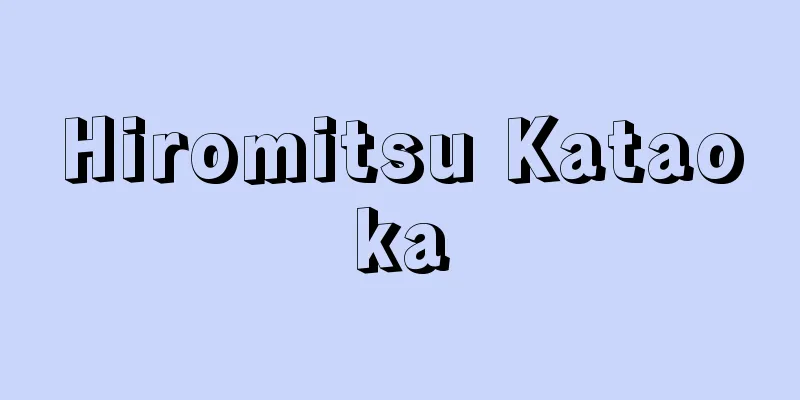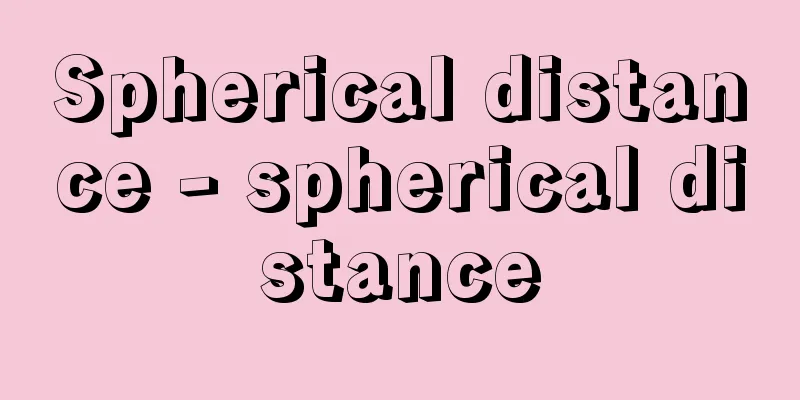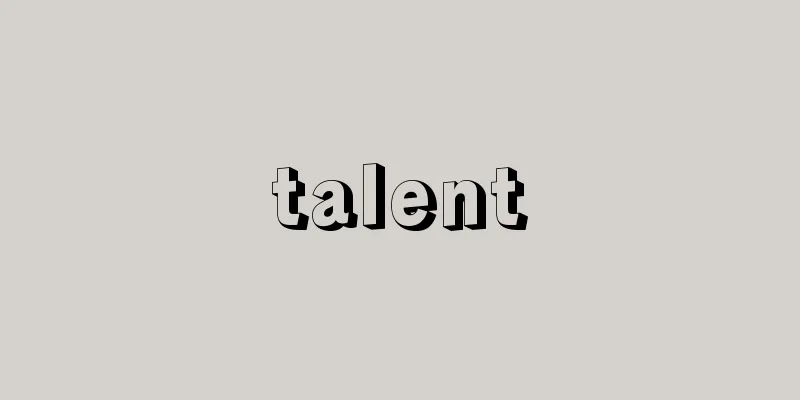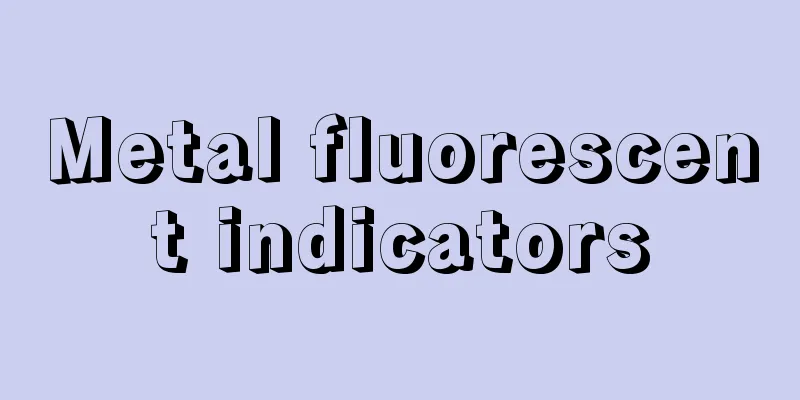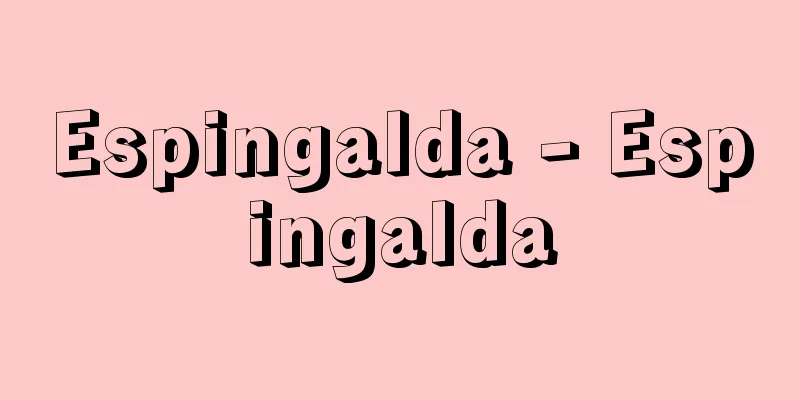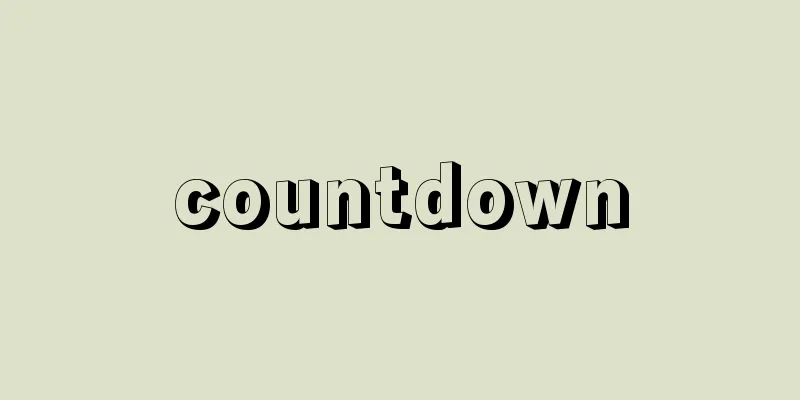Mongolian - Mongorugo
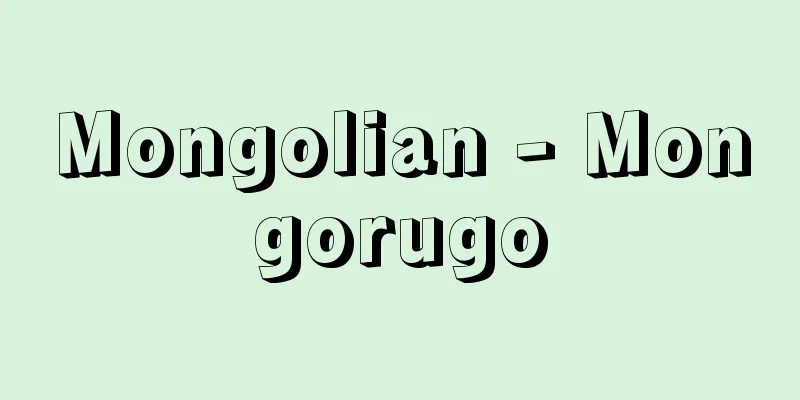
|
It is also called Mongolian. In the narrow sense, it refers to the Mongolian languages currently spoken in Mongolia and in the Inner Mongolia Autonomous Region of China, but in the broad sense, it refers to all Mongolian languages that have been used by Mongolian people from the past to the present. [Saito Sumio] Distribution and dialectModern Mongolian is distributed over a very wide area, from the Mongolian Plateau in the west to the lower Volga River basin in the east to northeastern China. The total population is estimated at 5 to 6 million, most of whom are speakers of Mongolian in the strict sense. The regional differences between Mongolian in the strict sense, Buryat in the Buryatia Republic of Russia, Kalmyk in the Kalmykia Republic of Russia, and the closely related Oirat language of western China are surprisingly small considering the vastness of the distribution area, but there are significant differences between Mogolian in Afghanistan, Daur and Mongol scattered in China. [Sumio Saito] characterMongolian script is said to have originated in the early 13th century when Genghis Khan had a Uighur named Tatatunga write their language in Uighur. The script is a descendant of the Aramaic script, but the format is the same as the Aramaic script, but in a vertical format, each character is spelled from top to bottom, and the lines are read from left to right. Around the 17th century, the character shape changed, and the characters before that are called Uighur Mongolian script, and those after that are called modern Mongolian script. Although this script is phonetic, it does not distinguish between o and u, t and d, etc., and was not ideal for the Mongolian language. Therefore, in 1648, Zaya Pandita of the Oirats devised the Oirat Mongolian script (Todo script), which was improved to accurately represent the pronunciation of the Oirat language. Buryat, Kalmyk, and the Khalkha dialect of Mongolian have adopted Russian orthography since the first half of the 20th century, and only the Mongols in China continue to use the Mongolian script (Mongolia has announced a policy in the 1990s to abandon Russian orthography and revive the Mongolian script, but has been struggling). Other scripts include the Khitan script used by the Khitan people who founded the Liao dynasty, the Phag-pa script created by Kublai Khan, a Tibetan monk, to write the languages of the various ethnic groups in the Yuan Empire, and the Soyombo script created by Zanabazar of Khalkha, but none of them were used for long. [Sumio Saito] Lineage and HistoryThe origin of Mongolian is still unclear. There are those who support the theory that it is related to Turkic and Tungusic languages and that it forms the Altaic language family together with them, and those who do not. Among the former, there are those who believe that it is related to Korean and Japanese. Historically, Mongolian is divided into Ancient Mongolian up to the 12th century, Medieval Mongolian up to the 16th century, and Modern Mongolian after that, mainly based on phonological characteristics. Currently, there are no direct documents of Ancient Mongolian because the Khitan script has not been deciphered, but there are abundant documents of Medieval Mongolian, such as inscriptions in Mongolian script such as the Genghis Khan Inscription, documents written in phonetic Chinese such as The Secret History of the Mongols, inscriptions and haizi in Phag-pa script, and dictionaries in Arabic script. Modern Mongolian has a huge amount of documents in Mongolian script, including chronicles such as Altan Topchi and The Source of Mongolia, and translations of Tibetan Buddhist scriptures. There are also some that have been given Hangul, such as "Mongol Lao Qi Da." [Sumio Saito] structureA phonological feature is the existence of vowel harmony. The grammatical structure is almost the same as Japanese, with inflections being made by the addition of suffixes to the words, and the order of words is subject-predicate, modifier-modified. However, in older documents, the nominative and genitive forms of pronouns are placed after the predicate verb and the modified word, respectively, and these remain as endings in some dialects even today. In addition, the language used in The Secret History of the Mongols had special endings for verbs and adjectives depending on gender, number, etc. Features of vocabulary include the existence of many words in common with Turkic and Tungusic languages, the inclusion of loanwords from ancient Indo-European languages and Arabic, and from modern languages such as Tibetan, Chinese, and Russian, and a rich vocabulary related to livestock. [Sumio Saito] "Basic Japanese-Mongolian Dictionary" by Narantsetseg et al. (1998, Daigaku Shorin)" ▽ "Guide to the Mongolian Language" edited by Aoki Shinji (1997, Heiharasha)" ▽ "Mongolian Languages" by Kuribayashi Hitoshi (Encyclopedia of Linguistics, Vol. 4, 1992, Daigaku Shorin)" ▽ "The Story of Mongolian Language" by Ozawa Shigeo (1978, Daigaku Shorin)" ▽ "Mongolian Language" by Nomura Masayoshi (included in An Overview of World Languages, Vol. 2, 1955, Kenkyusha Publishing)" [References] | | | | | | | | | | |Source: Shogakukan Encyclopedia Nipponica About Encyclopedia Nipponica Information | Legend |
|
蒙古(もうこ)語ともいう。狭義では現在モンゴル国および中国の内モンゴル自治区で話されているモンゴル系の言語をさすが、広義ではモンゴル系民族が過去から現在にわたって使用してきたモンゴル系諸言語全般をさす。 [斎藤純男] 分布・方言現代モンゴル語の分布地域はきわめて広く、モンゴル高原を中心に西はボルガ川下流域から東は中国東北部にまで及ぶ。総使用人口は500~600万と推定され、そのうちのほとんどを狭義のモンゴル語の話し手が占める。狭義のモンゴル語、ロシア連邦のブリヤーチア共和国のブリヤート語、同カルムイキア共和国のカルムイク語やそれと近い関係にある中国西部のオイラート語などの間の地域差は分布地域の広大さに比して驚くほど小さいが、アフガニスタンのモゴール語や中国に散在するダウール語、モングオル語などは著しく異なっている。 [斎藤純男] 文字モンゴル文字(蒙古字)は、チンギス・ハンが13世紀初頭にタタトゥンガというウイグル人に自分たちの言語をウイグル語によって書写させたのに始まるといわれる。アラム文字の系統を引く文字であるが、書式はそれをそのまま縦にしたもので、各文字は上から下へ綴(つづ)り、行は左から右に追う。17世紀ごろから字形に変化がおこり、それ以前のものをウイグル式モンゴル文字、それ以後のものを現代モンゴル文字とよんで区別する。この文字は表音文字ではあるが、oとu、tとdなどの区別をせず、モンゴル語にとって理想的なものではなかった。そこで、オイラートのザヤ・パンディタは1648年にオイラート語の発音を正確に表せるように改良を加えたオイラート式モンゴル文字(トド文字)を考案した。ブリヤート語、カルムイク語、モンゴル語ハルハ方言の3言語は20世紀前半よりロシア文字による正書法を採用しており、モンゴル文字を使用し続けているのは中国内のモンゴル人だけである(モンゴル国では、ロシア文字による正書法を捨ててモンゴル文字を復活させるという政策を90年代にうちだしたが、難航している)。そのほか、遼(りょう)を建国した契丹(きったん)族の用いた契丹文字、フビライ・ハンがチベットの高僧パスパに命じて元(げん)帝国内の諸民族の言語を書き表すためにつくらせたパスパ文字、ハルハのザナバザルが制作したソヨンボ文字などがあるが、いずれも長く使用されるに至らなかった。 [斎藤純男] 系統・歴史モンゴル語の系統はいまだ明らかとなっておらず、チュルク(トルコ)系やツングース系の諸言語と同系関係を有し、それらとともにアルタイ語族を形成するという説を支持する立場と、そうでない立場とがある。そして、前者のなかには朝鮮語や日本語との同系関係を認めようとする考え方もある。歴史的には、おもに音韻上の特徴により12世紀までを古代モンゴル語、16世紀までを中世モンゴル語、それ以降を近代モンゴル語と分ける。契丹文字が解読されていない現在、古代モンゴル語の直接の資料はないが、中世モンゴル語の文献は豊富で、「チンギス・ハン碑文」をはじめとするモンゴル文字による碑文類、『元朝(げんちょう)秘史』などの漢字で表音表記された諸文献、パスパ文字による碑文や牌子(ハイズ)、アラビア文字による辞書などがある。近代モンゴル語は、『黄金史綱』(アルタン・トプチ)、『蒙古源流』などの年代記やチベット仏典の翻訳をはじめとするモンゴル文字による膨大な文献をもつ。また『蒙語老乞大(ろうきつだい)』などのようにハングルの付されたものもある。 [斎藤純男] 構造音韻面での特徴として母音調和の存在があげられる。文法上の構造は日本語とほぼ同様で、語形変化は語尾の接尾によって行われ、語も主語―述語、修飾語―被修飾語の順に並ぶ。ただし、古い文献では代名詞の主格形と属格形がそれぞれ述語動詞と被修飾語に後置されており、これらは現在でもいくつかの方言に語尾として残存している。また、『元朝秘史』の言語は性や数などにより動詞や形容詞が特別の語尾を有していた。語彙(ごい)の面での特徴としては、チュルク系、ツングース系の諸言語と共通の語が多数存在すること、古くは印欧諸言語やアラビア語からの、そして近代ではチベット語や漢語、ロシア語などからの外来語が入っていること、家畜に関する語彙が豊富なこと、などがあげられる。 [斎藤純男] 『ナランツェツェグほか著『日本語・モンゴル語基礎辞典』(1998・大学書林)』▽『青木信治監編著『モンゴル語案内』(1997・平原社)』▽『栗林均「モンゴル諸語」(『言語学大辞典 第4巻』1992・大学書林)』▽『小沢重男著『モンゴル語の話』(1978・大学書林)』▽『野村正良著『蒙古語』(『世界言語概説 下巻』所収・1955・研究社出版)』 [参照項目] | | | | | | | | | | |出典 小学館 日本大百科全書(ニッポニカ)日本大百科全書(ニッポニカ)について 情報 | 凡例 |
<<: Mongolian Plateau - Mongol
>>: Mongolian Music - Mongolian Music
Recommend
Peroxide - Peroxide (English spelling)
A general term for oxides with a negative divalen...
Kamegajo - Kamegajo
...It occupies the north shore of Lake Inawashiro...
Salar language - Salargo (English spelling)
A Turkic language spoken mainly in Xunhua, Qinghai...
Schleiermacher (English spelling) Friedrich Ernst Daniel Schleiermacher
German theologian and philosopher. A leading figu...
Naobi no Mitama
Norinaga Motoori's treatise on ancient ways. ...
Akakura [Hot Springs] - Akakura
It is located in Myoko-Kogen Town (now Myoko City)...
Gertrud
...It is said that if a sleeping child's mout...
Albrecht
…the personal union of Denmark, Norway, and Swede...
Harrimanella stelleriana (Pall.) Coville
A dwarf evergreen shrub (illustration) of the Eric...
Majima Seigan
?-1379 A monk and ophthalmologist from the Northe...
Ginpara - black-headed munia
A bird of the order Passeriformes in the class Av...
Otakar II Přemysl
Around 1230 - 78 King of Bohemia during the Přemys...
glomerulus
…the renal corpuscle is a spherical body with a d...
Antipodes [Islands] - Antipodes
Located southeast of New Zealand, these uninhabite...
Alankara - Alankara
...It includes poetry, prose, and dramas that com...

